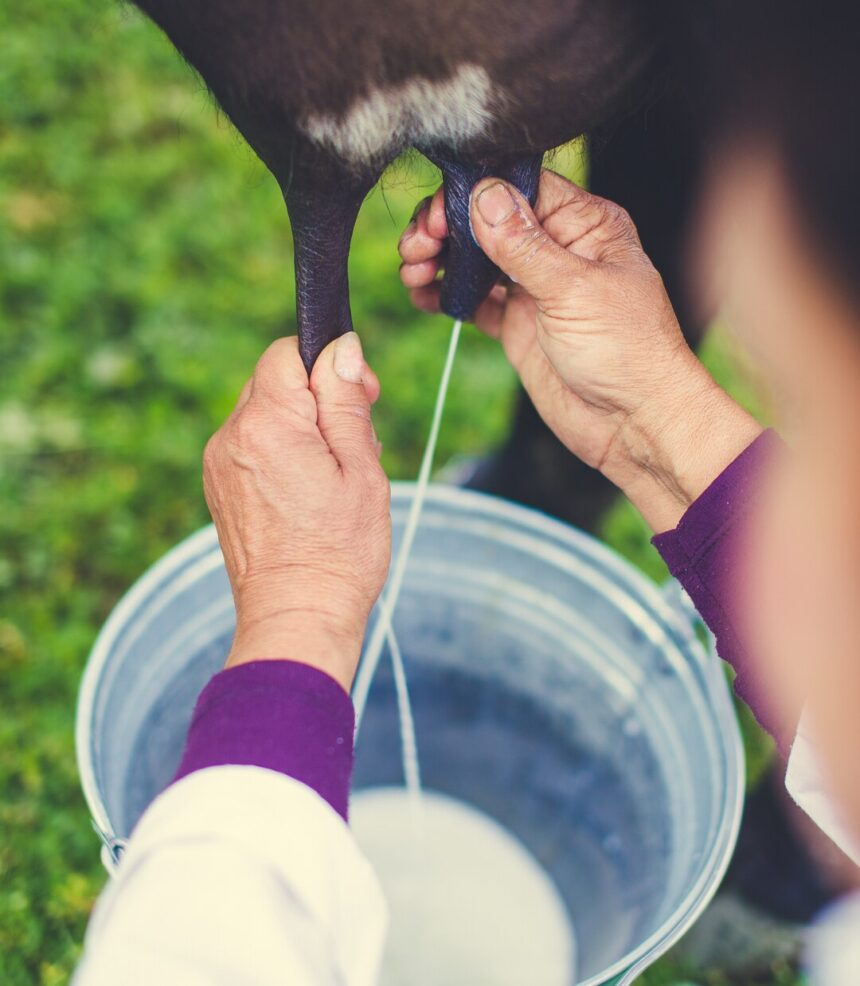Milking dairy animals is both an art and a science. Whether you’re milking cows, goats, sheep, or any other dairy animal, proper techniques are essential for maximizing yield, ensuring animal welfare, and producing high-quality milk. Here are some essential tips for properly milking dairy animals:
- Cleanliness is Key: Before milking, ensure that both the animal and the milking equipment are clean. Wash the udder and teats with warm water and a gentle detergent, then thoroughly dry them with a clean towel. Clean equipment helps prevent contamination and maintains milk quality.
- Maintain a Comfortable Environment: Dairy animals should be milked in a calm and stress-free environment. Provide a quiet space with adequate lighting and ventilation. Avoid sudden noises or movements that could startle the animals.
- Establish a Routine: Consistency is crucial in milking. Establish a regular milking schedule and stick to it. Milking at the same times each day helps stimulate milk production and ensures the animals are comfortable with the process.
- Proper Milking Technique: When milking, use gentle yet firm pressure to extract milk from the udder. Start by stripping a few streams of milk by hand to check for any abnormalities, such as signs of mastitis. Then, attach the milking machine or continue milking by hand in a systematic manner, moving from teat to teat.
- Monitor Milk Quality: Keep an eye on the color, smell, and consistency of the milk during milking. Abnormalities could indicate health issues in the animal or contamination in the milking process. Promptly address any concerns to maintain milk quality.
- Regular Maintenance of Equipment: Ensure milking equipment is properly maintained and sanitized between uses. This includes cleaning and sanitizing milking machines, changing liners regularly, and checking for any wear or damage that could affect milking efficiency or milk quality.
- Proper Post-Milking Care: After milking, apply a post-milking teat dip or spray to protect the udder from bacteria and infection. Provide ample clean bedding and access to fresh water and feed to keep the animals comfortable and healthy.
- Monitor Animal Health: Regularly check dairy animals for signs of illness or discomfort, such as swollen or tender udders, changes in milk production, or abnormal behavior. Promptly address any health issues to ensure the well-being of the animals and the quality of the milk.
- Training and Education: Invest in proper training for yourself and any staff involved in the milking process. Understanding animal behavior, milking techniques, and proper hygiene practices is essential for maintaining milk quality and animal welfare.
- Stay Informed: Keep up-to-date with the latest research, best practices, and regulations related to dairy farming and milk production. Continuous learning and improvement are key to running a successful dairy operation.
By following these essential tips for properly milking dairy animals, farmers can ensure the health and well-being of their animals, maximize milk production, and produce high-quality milk for consumers. Proper milking techniques not only benefit the animals and the farm but also contribute to the overall sustainability of the dairy industry.
Join 'Farmers Mag' WhatsApp Channel
Get the latest Farming news and tips delivered straight to your WhatsApp
CLICK HERE TO JOIN






